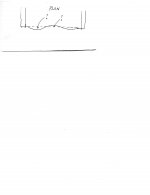wallysandcrab
Well-known member
I'm going to start on oxbow chest inspired by that on p. 103 of Sack's Fine Points of Furniture: good better best, superior masterpiece. I have two unknowns I'd like to request help with:
1.) How proud is the bulge? and
2.) Does the concave center recede behind the plane defined by the front edges of the case sides?
Does anyone have information on this? It doesn't have to be specifically about this particular piece.
Thanks in advance
JD
1.) How proud is the bulge? and
2.) Does the concave center recede behind the plane defined by the front edges of the case sides?
Does anyone have information on this? It doesn't have to be specifically about this particular piece.
Thanks in advance
JD

